This article was medically reviewed by Siddharth Tambar, MD. Dr. Siddharth Tambar, MD is a board certified rheumatologist at Chicago Arthritis and Regenerative Medicine in Chicago, Illinois. With over 19 years of experience, Dr. Tambar specializes in Regenerative Medicine and Rheumatology, with a focus on platelet rich plasma and bone marrow derived stem cell treatments for arthritis, tendinitis, injuries, and back pain. Dr. Tambar holds a BA in Economics from State University of New York at Buffalo. He earned his MD from State University of New York at Syracuse. He completed his Internship, Residency in Internal Medicine, and his Rheumatology Fellowship at Northwestern Memorial Hospital. Dr Tambar is board certified in both rheumatology and internal medicine. He also holds Musculoskeletal Ultrasound Diagnostic and Interventional certifications from the American College of Rheumatology and the American Institute of Ultrasound in Medicine.
There are 7 references cited in this article, which can be found at the bottom of the page.
wikiHow marks an article as reader-approved once it receives enough positive feedback. In this case, 100% of readers who voted found the article helpful, earning it our reader-approved status.
This article has been viewed 188,250 times.
Experts agree that gout attacks may come on suddenly and typically cause pain, swelling, tenderness, and redness in your joints. Often, the first joint affected is your big toe.[1] Gout is a common form of inflammatory arthritis that's caused by excess uric acid in your joint tissues. Research suggests that you might be able to control gout flare-ups with medication and lifestyle changes, but it's not curable.[2] If you recognize symptoms of gout, try not to worry because you may find relief with treatment options.
Steps
Diagnosing Gout and Understanding Aggravating Factors
-
1Understand the symptoms of gout. Caused by an excess buildup of uric acid, gout's symptoms may vary significantly from patient to patient, including development of chronic gout instead of isolated episodes. By and large, however, gout's symptoms include:[3]
- Warmth, pain, redness, and swelling in a joint of a limb, usually a big toe in the foot, although it often develops in the ankle or knee.[4]
- Pain that starts during the night and maintains an almost unbearable intensity.
- Peeling or itchiness in the skin around the affected joint(s).
-
2Know the goals of treating gout. Gout comes with several different side-effects and symptoms. Treating gout often involves understanding how to treat the different possible aspects of the condition:[5]
- End the pain of acute flares.
- Prevent future attacks.
- Halt the formation of tophi (masses of urate crystals deposited in soft tissue).
- Intercept the growth of kidney stones.
Advertisement -
3Know what causes and aggravates gout. An ounce of prevention is worth a pound of cure. Gout can be triggered and/or aggravated by a number of different factors:[6]
- Gout can be triggered by:
- Dehydration
- Heavy eating
- Heavy alcohol consumption
- Injury or recent trauma
- Gout can be aggravated by:
- Obesity and weight gain
- Alcohol consumption
- High blood pressure (hypertension)
- High-fructose corn syrup
- Certain medications
- Gout can be triggered by:
Treating Gout Attacks
-
1Ice the area for 15 minutes at a time.[7] You can reapply the ice pack several times a day, as long as you rest your skin between applications. Wrap your ice in a towel or put a layer of fabric in between your skin and the ice. The ice can help relieve pain and swelling.[8]
- Don't put ice directly against your skin, as it can cause damage.
-
2Immobilize the joints of the limbs where the gout is bothering you. Elevate the joint, if you can. This should reduce the pain and inflammation of the joints.[9]
- Give yourself time to rest and recover.
- Avoid putting weight on the joint.
-
3Take NSAIDs after talking to your doctor. NSAIDs stands for non-steroidal anti-inflammatory drugs, and they refer to common household and prescription items such as ibuprofen, naproxen, or indomethacin. NSAIDs decrease pain and reduce inflammation.[10]
- Don't take any medications without first talking to your doctor.
- Follow all instructions on the label.
-
4Ask your doctor if colchicine is right for you. Colchicine is a medicine in tablet form that blocks inflammation caused by uric acid crystals.[11] Colchicine may also be beneficial in reducing the pain associated with gout for those patients who cannot take NSAIDs, although it can be taken in combination with NSAIDs. There is some evidence to suggest that taking colchicine may reduce the chances of future gout attacks.[12]
- Colchicine is best for attacks with an onset shorter than 36 hours.
- You should not take colchicine if you've already taken it in the last 14 days for another acute attack.
-
5Take corticosteroids for gout. Corticosteroids for gout reduce many of the symptoms associated with gout, including pain, redness, and swelling.[13] Corticosteroids should be used when:
- You're dealing with gout in a single joint
- You're dealing with a gout attack that does not respond to NSAIDs
- Your medical history precludes you from taking colchicine or NSAIDS such as naxopren
-
6Ask your doctor for a treatment regimen for your gout attacks. If you suspect that you're dealing with the redness, swelling, and pain of a gout attack, talk with your doctor about following a regimen when an attack of gout disables you. Your doctor will have a list of activities that you can follow and medications that you can take.[14]
Managing Long-Term Complications
-
1Begin taking a medicine that reduces levels of uric acid in your blood.[15] See your doctor about reducing your uric acid by taking certain medicines. These medicines may include:
- Urate lowering agents. Urate lowering agents can include febuxostat, allopurinol, or probenecid. These medications are commonly prescribed to help manage gout.
- Uricosuric agents. Uricosuric agents basically supercharge the kidneys, which in turn help remove excess uric acid. Uricosuric agents have adequate results for about 75% of patients.[16] Uricosuric agents have adequate results for about 75% of patients.
- Xanthine oxidase inhibitors. These types of medicines basically keep a chemical called xanthine oxidase from forming.[17] Xanthine oxidase is instrumental in helping uric acid buildup.
-
2Watch your weight and get more exercise. Exercise will help you to lose weight as well as help you deal with the pain that comes with arthritis. 30 minutes a day is all it takes to see improvement. Light walking, aerobic exercise, or strength training can help you deal with long-term care of gout.
-
3Watch what you drink. Alcohol, but especially beer, blocks the release of uric acid into your urine, causing it to get bottlenecked in your body.[18] Beer, especially, contains a lot of purines, which are broken down into uric acid eventually.
-
4Drink at least 3 litres (0.79 US gal) of fluids each day. It's best to stick to water. Add slices of oranges, lemons, or cucumbers to your water for a little flavoring. You can also drink tea or coffee. Alternatively, eat watery foods, such as soups, fruits, and vegetables.
- Coffee actually helps lower your uric acid levels, so it can be a great option for managing your gout.[19]
-
5Talk to your doctor about the medications you're currently taking. Some medication that you are currently taking may interfere with the medications you're using to treat gout, in addition to affecting the amount of uric acid your body produces. Talk to your doctor about any adverse pharmacological interactions you might be experiencing.
-
6Protect your joints. Avoid joint injuries and repetitive movements that can aggravate afflicted joints. Walk or run on softer surfaces (artificial track or sand, for example) instead of concrete.
Using Diet to Treat Gout
-
1Stay away from high-risk problem-foods associated with gout. Foods that are at high-risk to worsening your gout contain purines. Purines raise uric acid levels in your body, causing the painful joint inflammation. Foods that are especially high in purines include:[20]
- Animal organs such as liver, kidney, sweetbreads, and brains
- Meats, especially red meats, such as bacon, beef, lamb, and other gamey meats
- Anchovies, sardines, scallops, mackerel and herring
- Gravy
- Beer
-
2Limit your intake of food with a moderate amount of purines. Foods that should be consumed with caution and moderation include:[21]
- Seafood and fish (other than high-purine seafood)
- Oatmeal
-
3Enjoy the foods that are especially low in purines. The following foods can be eaten without worrying about their effect on your uric acid buildup:[22]
- Green, leafy vegetables
- Fruits and fruit juices
- Processed (non-whole grain) breads and cereals
- Chocolate and cocoa
- Butter, buttermilk, eggs, and cheese
- Beverages like coffee, tea, and carbonated sodas
- Nuts and assorted nut butters
-
4Consider eating foods that reportedly help your gout. Foods that are low in purines don't necessarily help your gout. (Neither do they hurt.) The following foods may actually help you on your quest to stay symptom-free:[23]
- Nonfat or low-fat milk
- Low-fat yogurt
Expert Q&A
Did you know you can get expert answers for this article?
Unlock expert answers by supporting wikiHow
-
QuestionWhat remedies can I take to help with gout?
 Siddharth Tambar, MDDr. Siddharth Tambar, MD is a board certified rheumatologist at Chicago Arthritis and Regenerative Medicine in Chicago, Illinois. With over 19 years of experience, Dr. Tambar specializes in Regenerative Medicine and Rheumatology, with a focus on platelet rich plasma and bone marrow derived stem cell treatments for arthritis, tendinitis, injuries, and back pain. Dr. Tambar holds a BA in Economics from State University of New York at Buffalo. He earned his MD from State University of New York at Syracuse. He completed his Internship, Residency in Internal Medicine, and his Rheumatology Fellowship at Northwestern Memorial Hospital. Dr Tambar is board certified in both rheumatology and internal medicine. He also holds Musculoskeletal Ultrasound Diagnostic and Interventional certifications from the American College of Rheumatology and the American Institute of Ultrasound in Medicine.
Siddharth Tambar, MDDr. Siddharth Tambar, MD is a board certified rheumatologist at Chicago Arthritis and Regenerative Medicine in Chicago, Illinois. With over 19 years of experience, Dr. Tambar specializes in Regenerative Medicine and Rheumatology, with a focus on platelet rich plasma and bone marrow derived stem cell treatments for arthritis, tendinitis, injuries, and back pain. Dr. Tambar holds a BA in Economics from State University of New York at Buffalo. He earned his MD from State University of New York at Syracuse. He completed his Internship, Residency in Internal Medicine, and his Rheumatology Fellowship at Northwestern Memorial Hospital. Dr Tambar is board certified in both rheumatology and internal medicine. He also holds Musculoskeletal Ultrasound Diagnostic and Interventional certifications from the American College of Rheumatology and the American Institute of Ultrasound in Medicine.
Board Certified Rheumatologist
-
QuestionWhat is the main cause of gout?
 Siddharth Tambar, MDDr. Siddharth Tambar, MD is a board certified rheumatologist at Chicago Arthritis and Regenerative Medicine in Chicago, Illinois. With over 19 years of experience, Dr. Tambar specializes in Regenerative Medicine and Rheumatology, with a focus on platelet rich plasma and bone marrow derived stem cell treatments for arthritis, tendinitis, injuries, and back pain. Dr. Tambar holds a BA in Economics from State University of New York at Buffalo. He earned his MD from State University of New York at Syracuse. He completed his Internship, Residency in Internal Medicine, and his Rheumatology Fellowship at Northwestern Memorial Hospital. Dr Tambar is board certified in both rheumatology and internal medicine. He also holds Musculoskeletal Ultrasound Diagnostic and Interventional certifications from the American College of Rheumatology and the American Institute of Ultrasound in Medicine.
Siddharth Tambar, MDDr. Siddharth Tambar, MD is a board certified rheumatologist at Chicago Arthritis and Regenerative Medicine in Chicago, Illinois. With over 19 years of experience, Dr. Tambar specializes in Regenerative Medicine and Rheumatology, with a focus on platelet rich plasma and bone marrow derived stem cell treatments for arthritis, tendinitis, injuries, and back pain. Dr. Tambar holds a BA in Economics from State University of New York at Buffalo. He earned his MD from State University of New York at Syracuse. He completed his Internship, Residency in Internal Medicine, and his Rheumatology Fellowship at Northwestern Memorial Hospital. Dr Tambar is board certified in both rheumatology and internal medicine. He also holds Musculoskeletal Ultrasound Diagnostic and Interventional certifications from the American College of Rheumatology and the American Institute of Ultrasound in Medicine.
Board Certified Rheumatologist
-
QuestionHow do I treat gout on the back of my heel?
 Luba Lee, FNP-BC, MSLuba Lee, FNP-BC is a Board-Certified Family Nurse Practitioner (FNP) and educator in Tennessee with over a decade of clinical experience. Luba has certifications in Pediatric Advanced Life Support (PALS), Emergency Medicine, Advanced Cardiac Life Support (ACLS), Team Building, and Critical Care Nursing. She received her Master of Science in Nursing (MSN) from the University of Tennessee in 2006.
Luba Lee, FNP-BC, MSLuba Lee, FNP-BC is a Board-Certified Family Nurse Practitioner (FNP) and educator in Tennessee with over a decade of clinical experience. Luba has certifications in Pediatric Advanced Life Support (PALS), Emergency Medicine, Advanced Cardiac Life Support (ACLS), Team Building, and Critical Care Nursing. She received her Master of Science in Nursing (MSN) from the University of Tennessee in 2006.
Board-Certified Family Nurse Practitioner
Warnings
- Gout is associated with an increased risk of kidney stones.⧼thumbs_response⧽
- Recurrent bouts of acute gout can lead to a degenerative form of arthritis called gouty arthritis.⧼thumbs_response⧽
References
- ↑ https://www.mayoclinic.org/diseases-conditions/gout/symptoms-causes/syc-20372897
- ↑ https://www.cdc.gov/arthritis/basics/gout.html
- ↑ https://www.mayoclinic.org/diseases-conditions/gout/diagnosis-treatment/drc-20372903
- ↑ Siddharth Tambar, MD. Board Certified Rheumatologist. Expert Interview. 25 August 2020.
- ↑ https://www.mayoclinic.org/diseases-conditions/gout/diagnosis-treatment/drc-20372903
- ↑ https://www.mayoclinic.org/diseases-conditions/gout/diagnosis-treatment/drc-20372903
- ↑ Siddharth Tambar, MD. Board Certified Rheumatologist. Expert Interview. 25 August 2020.
- ↑ https://www.arthritis.org/about-arthritis/types/gout/treatments/types.php
- ↑ https://www.arthritis.org/about-arthritis/types/gout/treatments/types.php
- ↑ https://www.mayoclinic.org/diseases-conditions/gout/diagnosis-treatment/drc-20372903
- ↑ http://www.webmd.com/drugs/2/drug-8640/colchicine+oral/details
- ↑ https://www.mayoclinic.org/diseases-conditions/gout/diagnosis-treatment/drc-20372903
- ↑ http://www.webmd.com/arthritis/tc/gout-medications
- ↑ Siddharth Tambar, MD. Board Certified Rheumatologist. Expert Interview. 25 August 2020.
- ↑ Siddharth Tambar, MD. Board Certified Rheumatologist. Expert Interview. 25 August 2020.
- ↑ http://www.webmd.com/arthritis/tc/gout-medications
- ↑ http://www.webmd.com/arthritis/tc/gout-medications
- ↑ Siddharth Tambar, MD. Board Certified Rheumatologist. Expert Interview. 25 August 2020.
- ↑ https://www.mayoclinic.org/diseases-conditions/gout/diagnosis-treatment/drc-20372903
- ↑ https://www.arthritis-health.com/types/gout/gout-prevention-diet
- ↑ https://www.arthritis-health.com/types/gout/gout-prevention-diet
- ↑ https://www.arthritis-health.com/types/gout/gout-prevention-diet
- ↑ https://www.arthritis-health.com/types/gout/gout-prevention-diet
About This Article
To treat a gout attack, try holding an ice pack over the affected area for 15 minutes at a time to reduce the pain and swelling. However, make sure to wrap the ice pack in a cloth or towel since putting it directly on your skin can cause damage. Additionally, elevate the joint if you can to help reduce the pain and inflammation. You may also want to try taking a non-steroidal anti-inflammatory drug such as Advil, but make sure to speak with your doctor about the possible side effects before doing so. For more advice from our Medical reviewer, including how to manage long-complications of gout, keep reading.
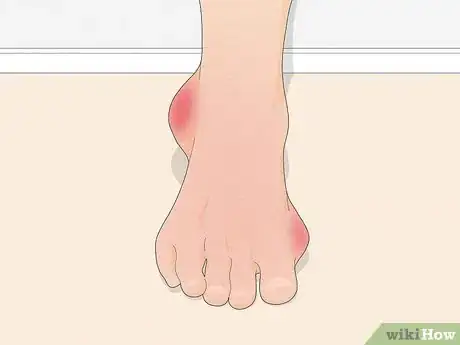

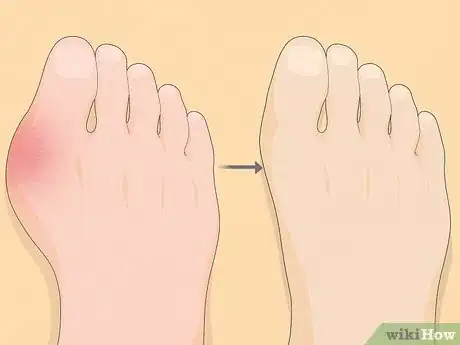

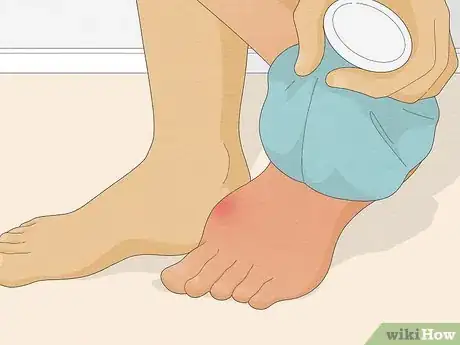


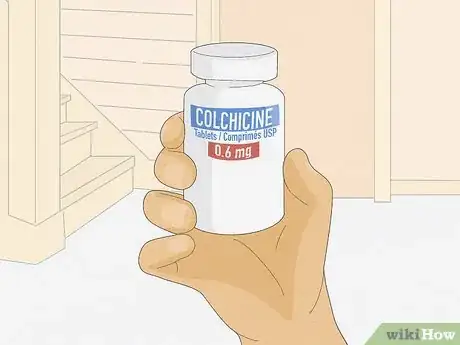
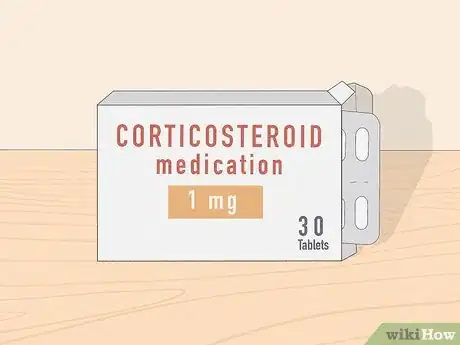

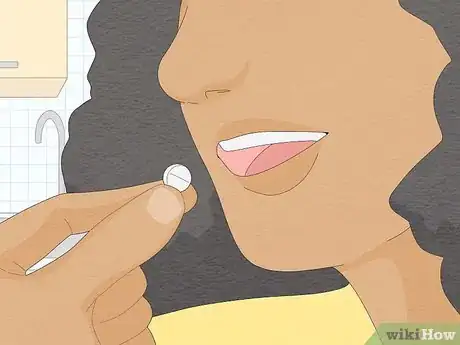
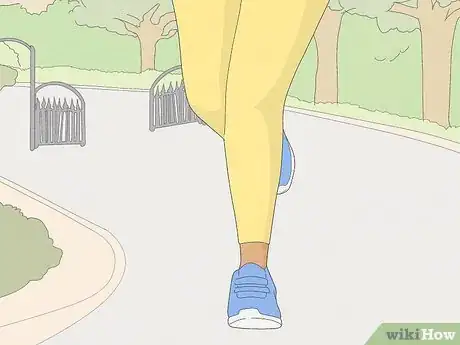
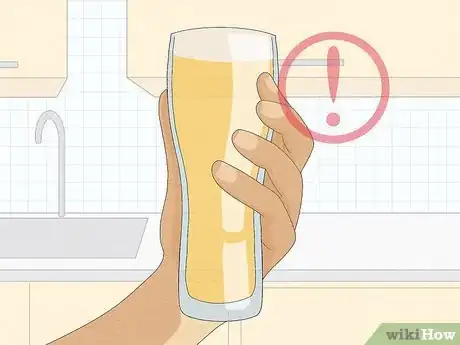
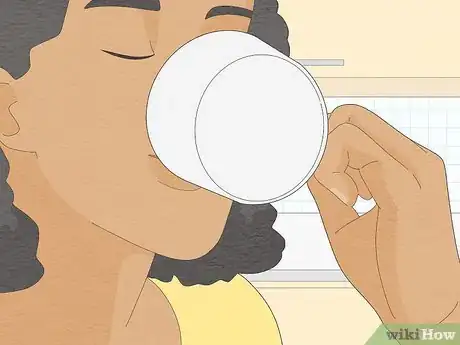
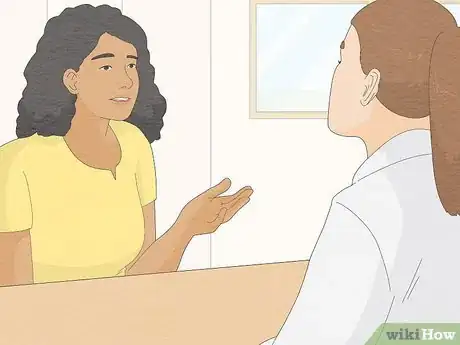
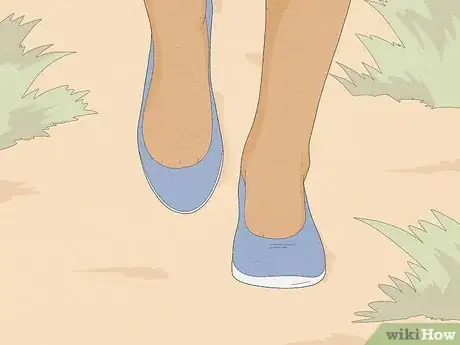




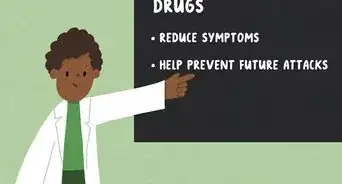

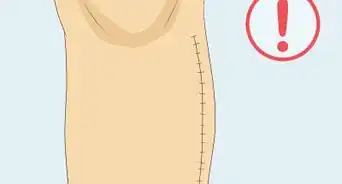
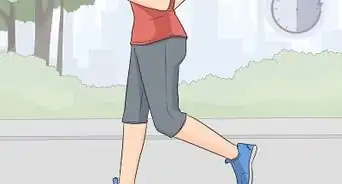

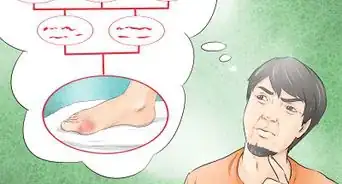
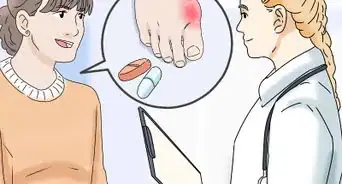

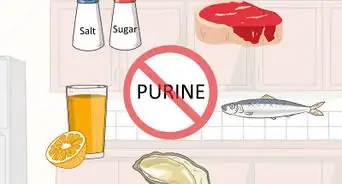

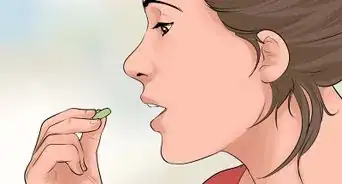












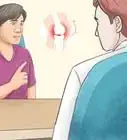
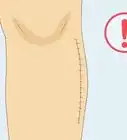





































Medical Disclaimer
The content of this article is not intended to be a substitute for professional medical advice, examination, diagnosis, or treatment. You should always contact your doctor or other qualified healthcare professional before starting, changing, or stopping any kind of health treatment.
Read More...